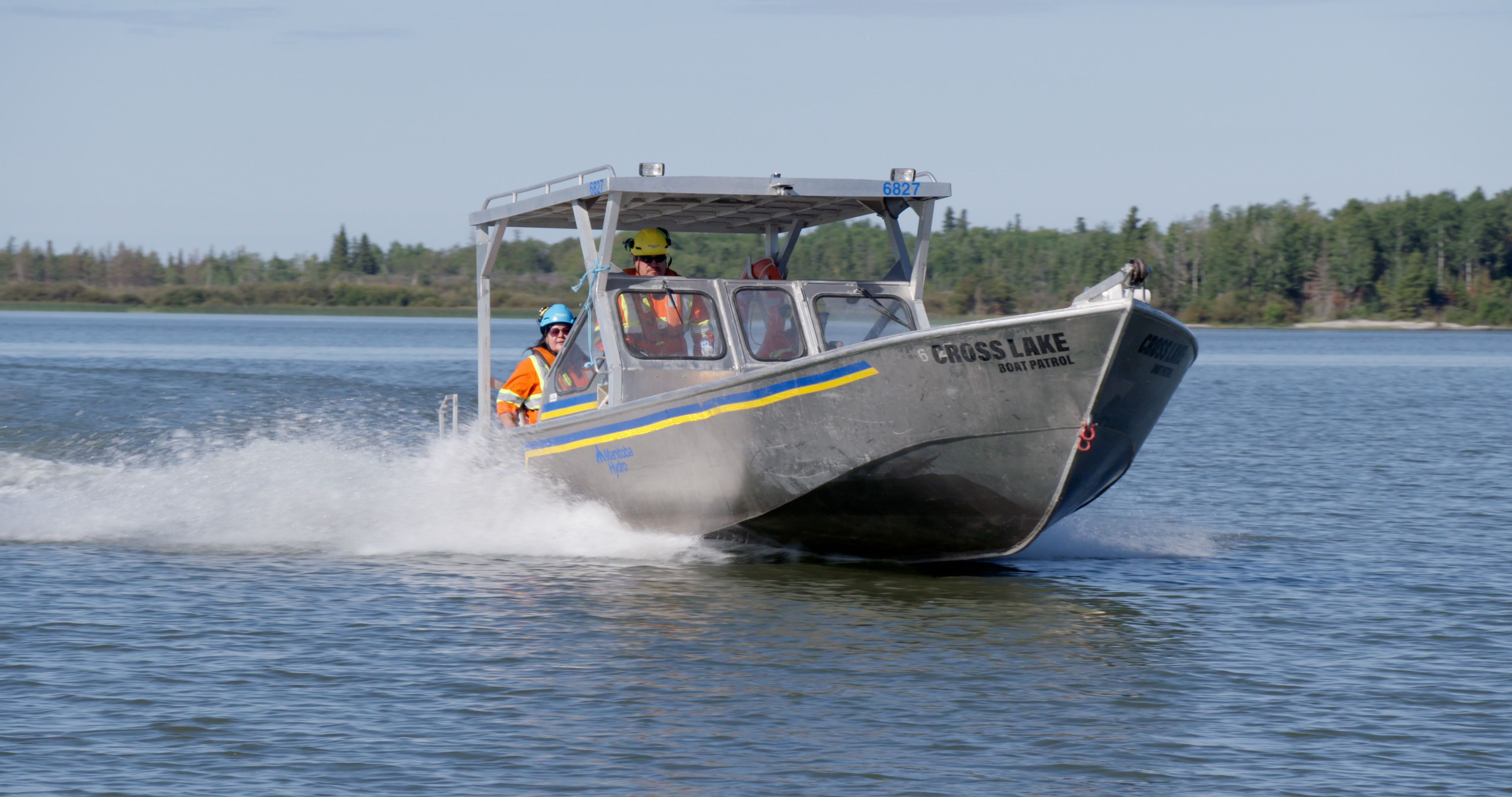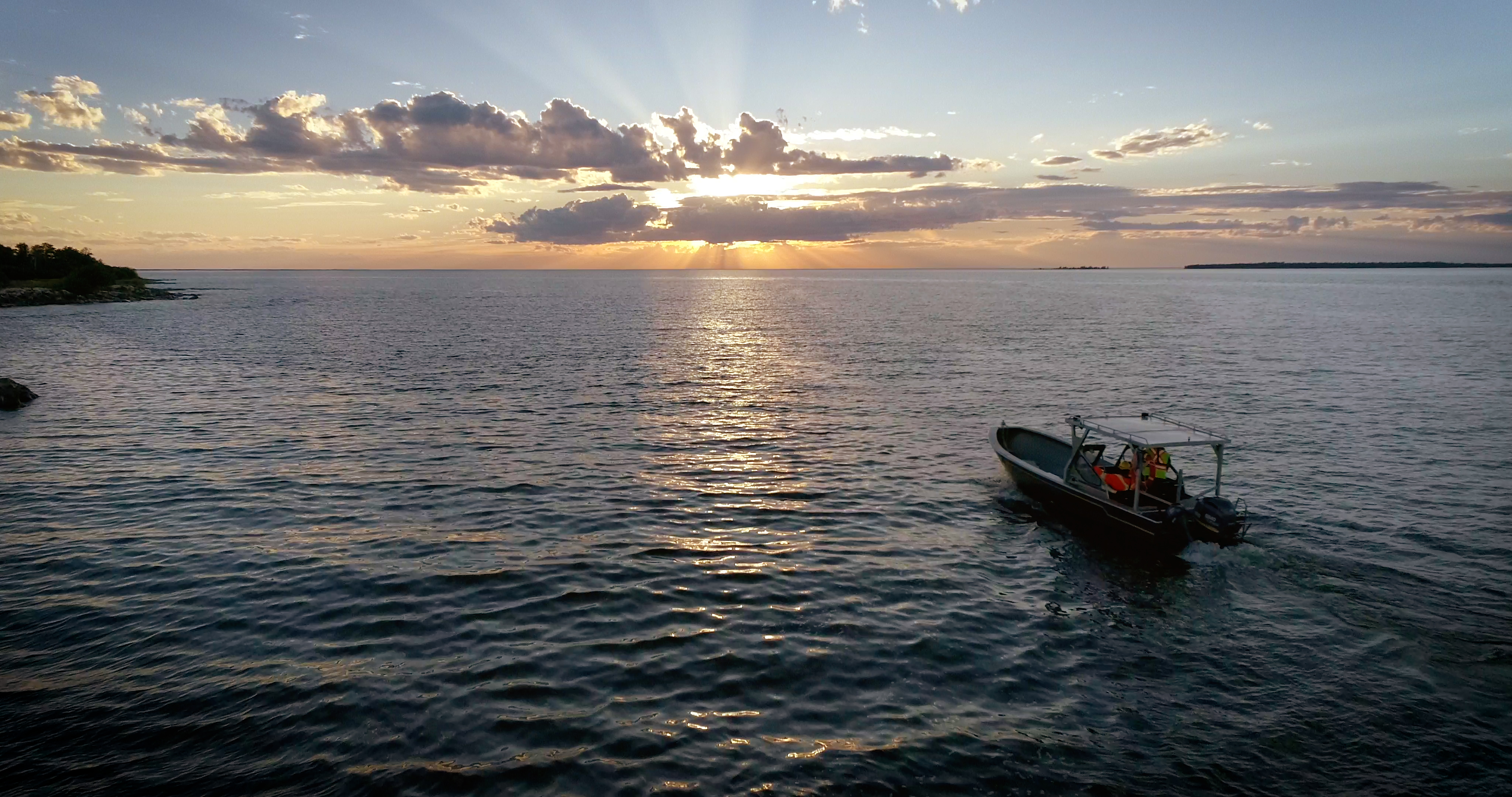Connecting with communities on northern waterways
For many people living in communities across northern Manitoba, having safe and accessible waterways is an important part of their way of life.

Manitoba Hydro Waterways Management boat patrollers on the job on Cross Lake in northern Manitoba.
Manitoba Hydro has a presence right across the province — on Treaty 1, Treaty 2, Treaty 3, Treaty 4, and Treaty 5 lands — the original territories of the Anishinaabe, Anishininew, Cree, Dakota, and Dene Peoples, and the National Homeland of the Red River Métis. The legacy of the past remains a strong influence on Manitoba Hydro’s relationship with Indigenous communities today, and the utility remains committed to establishing and maintaining strong, mutually beneficial relationships with Indigenous communities, many of whom were impacted by projects developed in the 40s, 50s, 60s, and 70s.

Manitoba Hydro employees on a boat on Cross Lake under a sunset.
That’s why, as just a small part of its reconciliation and environmental commitments across the province, Manitoba Hydro has a Waterways Management Program.
The Waterways Management Program operates across the north, along the Saskatchewan, Burntwood, Nelson, and Churchill River systems, connecting with communities and promoting safety. It includes Manitoba Hydro employees in the Indigenous & Community Relations Division, local Indigenous community contractors, and 42 seasonal boat patrollers from nearby Indigenous communities. These groups share a passion for the land and the water and implement the boat patrol program, debris-clearing programs, shoreline stabilization projects and the annual installation of safe ice trails. In these areas, Manitoba Hydro’s dedicated employees share their traditional knowledge and experience to promote safety on the water.
Watch the video below for more information about the Waterways Management Program.
